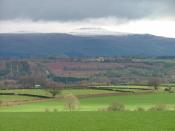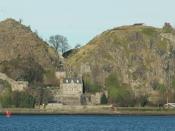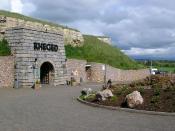After the departure of the Romans, the earlier tribal groupings in North Britain were forced to adapt to their changing circumstances. Their first task for the Britons after the Romans left was defence and the establishment of stable government. In this they appear to have been successful, there is no hint of anarchy, and so this has led many to argue that there was a high degree of continuity after the Romans left, particularly in Britannia Superior. This is supported by the fact that, in 550, Procopius says that Britain continued to be ruled by 'tyrants', by which he meant members of the native British aristocracy.
This is compounded by the fact that Ninius wrote large numbers of genealogies in the post-Roman period and many of the names within the important families of the men of the north, appear to have be Romanised, thus demonstrating the continued cultural influence of the Romans after 400.
One such example can be seen in the names of Cunedda of Gododdin's father, grandfather and great-grandfather, who were called; Aetern, Paternpeisrot and Tacit. Other evidence points to the use of Roman terminology, such as "centurions", amongst the native British. Archaeological evidence supports this theory, burial practices did not change from the Roman period and so one may presume that Romanism continued, and the Britons did not turn to barbarianism.
On the contrary, however, in the poems of Aneirin and Taliesin, circa 550, there is no mention of Christianity, Roman cities or centurions. Indeed they appear to be describing a much more tribal life. Yet other sources show references to heaven and Easter in poetry of this time. Thus we have a paradox between the literary evidence and archaeological evidence. It is of course possible that this is due to later alterations, additions and omissions, in...


